Abstract
The advent of new technology for geographical representation and spatial analysis of databases from different sectors offers a new approach to planning and managing the control of tropical diseases. This article reviews the geographical and intersectoral aspects of the epidemiology and control of African trypanosomiasis, cutaneous and visceral leishmaniasis, Chagas disease, schistosomiasis, and foodborne trematode infections. The focal nature of their transmission, increasing recognition of the importance of animal reservoirs, and the need to understand environmental factors influencing their distribution are common to all these diseases. Geographical information systems (GIS) open a completely new perspective for intersectoral collaboration in adapting new technology to promote control of these diseases.
Full text
PDF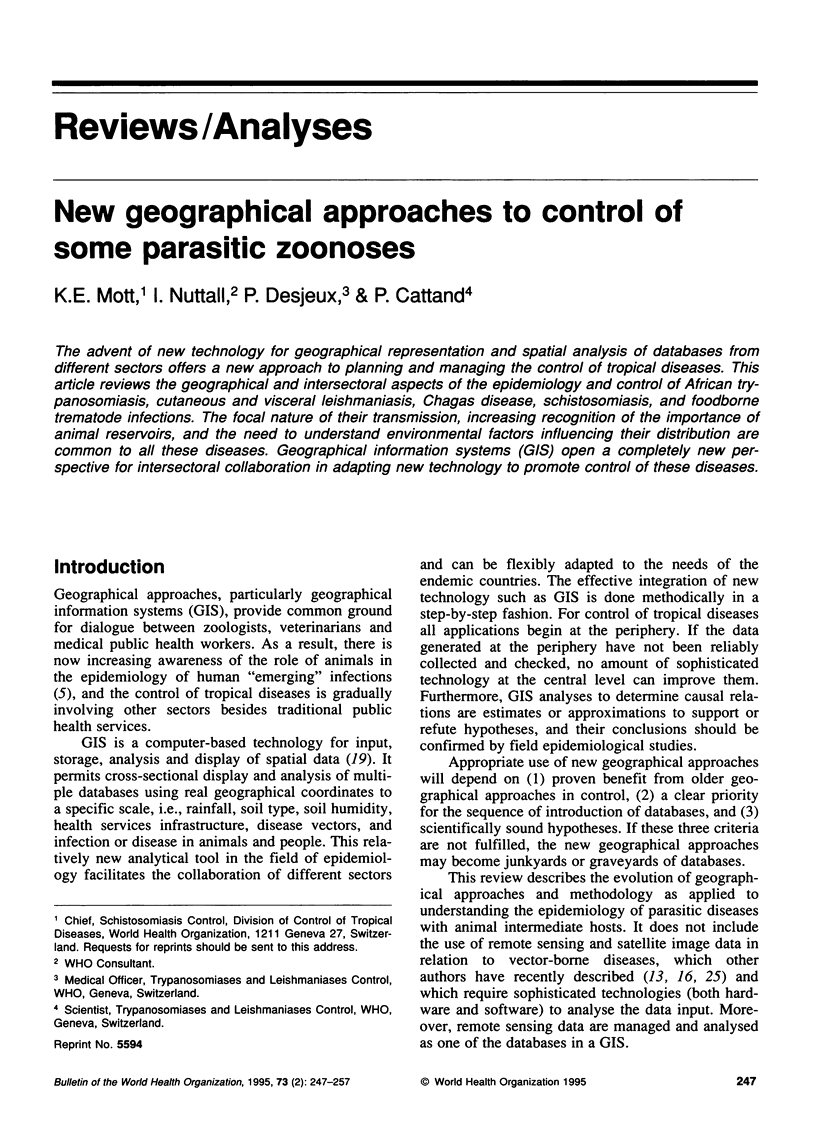
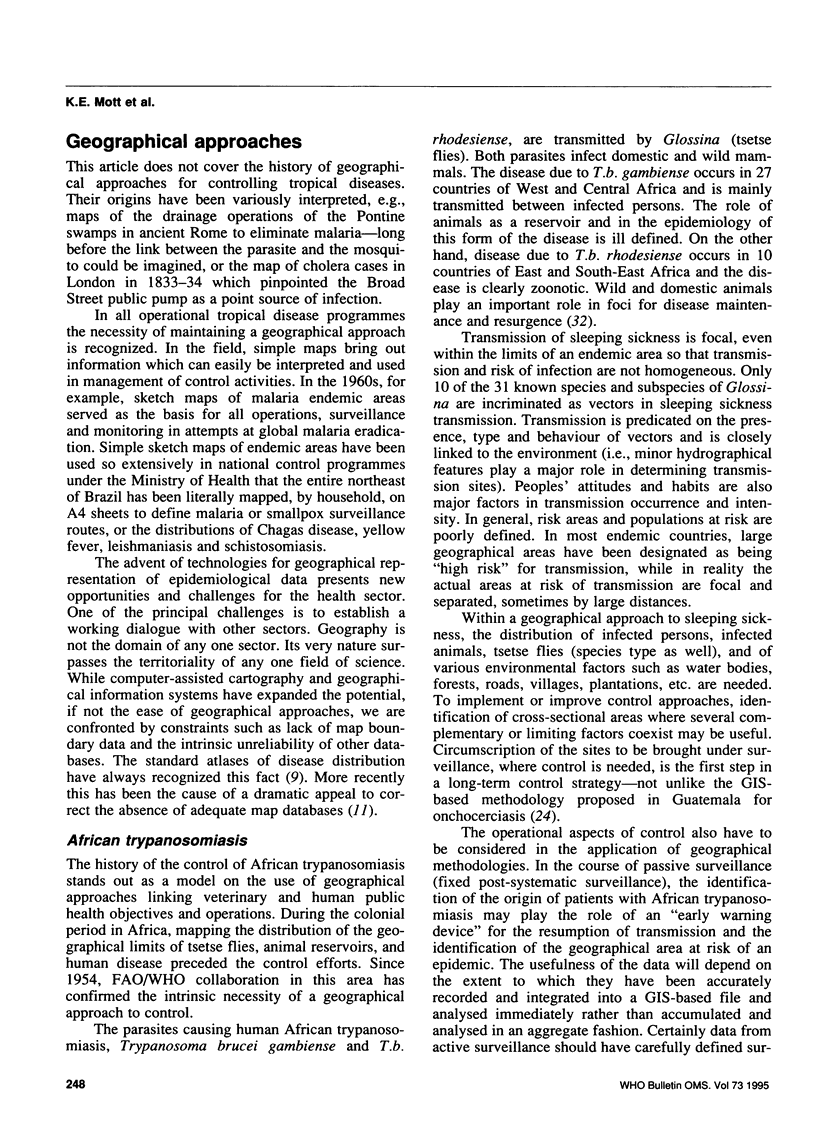

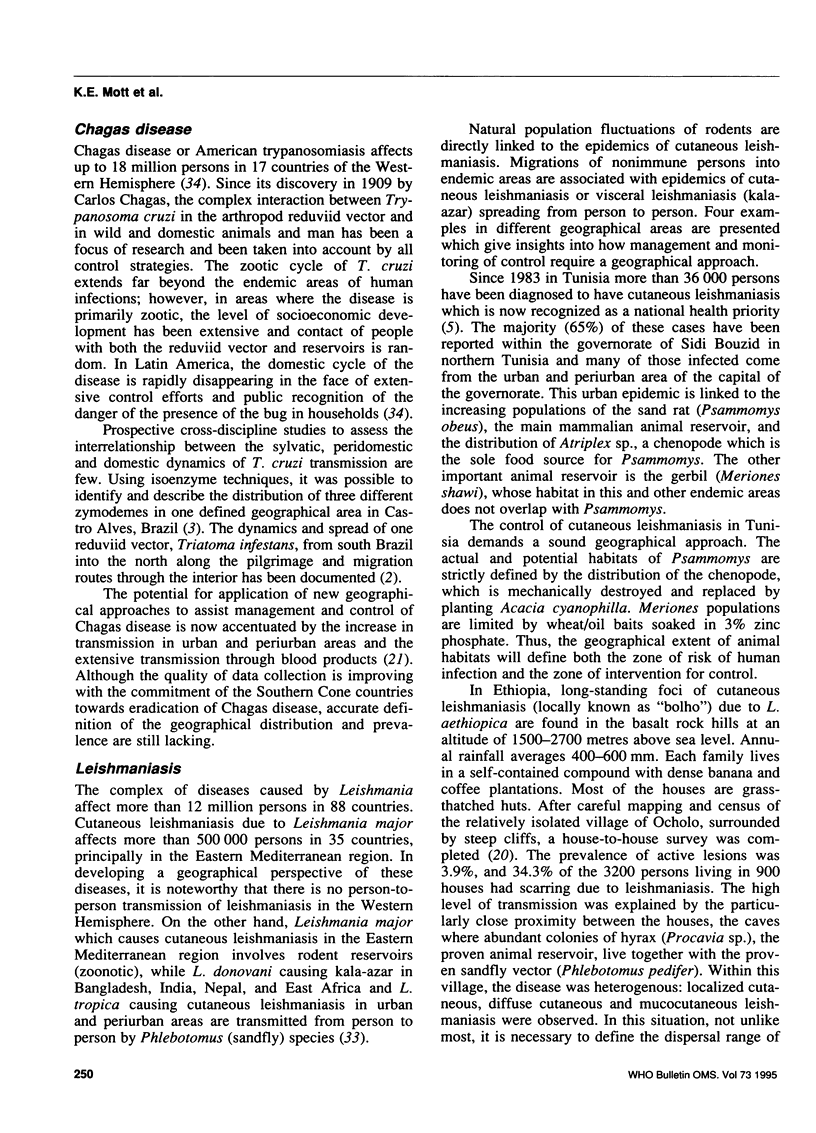
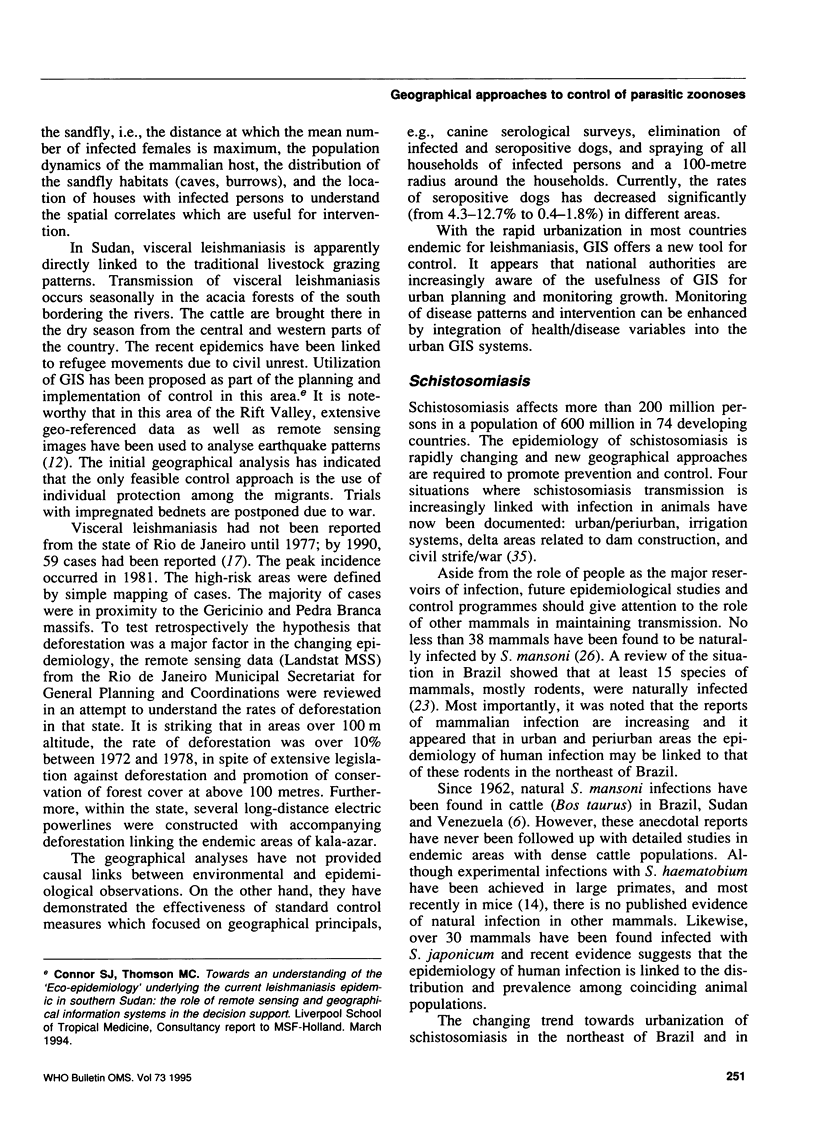
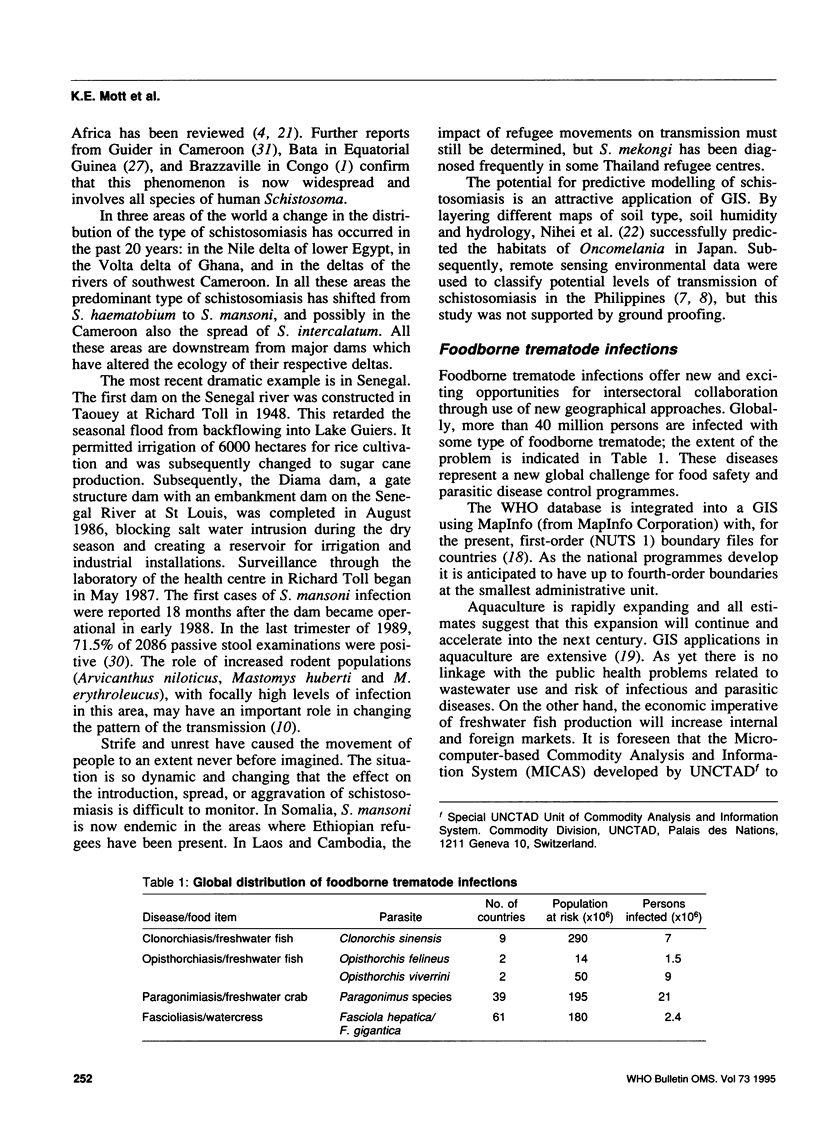
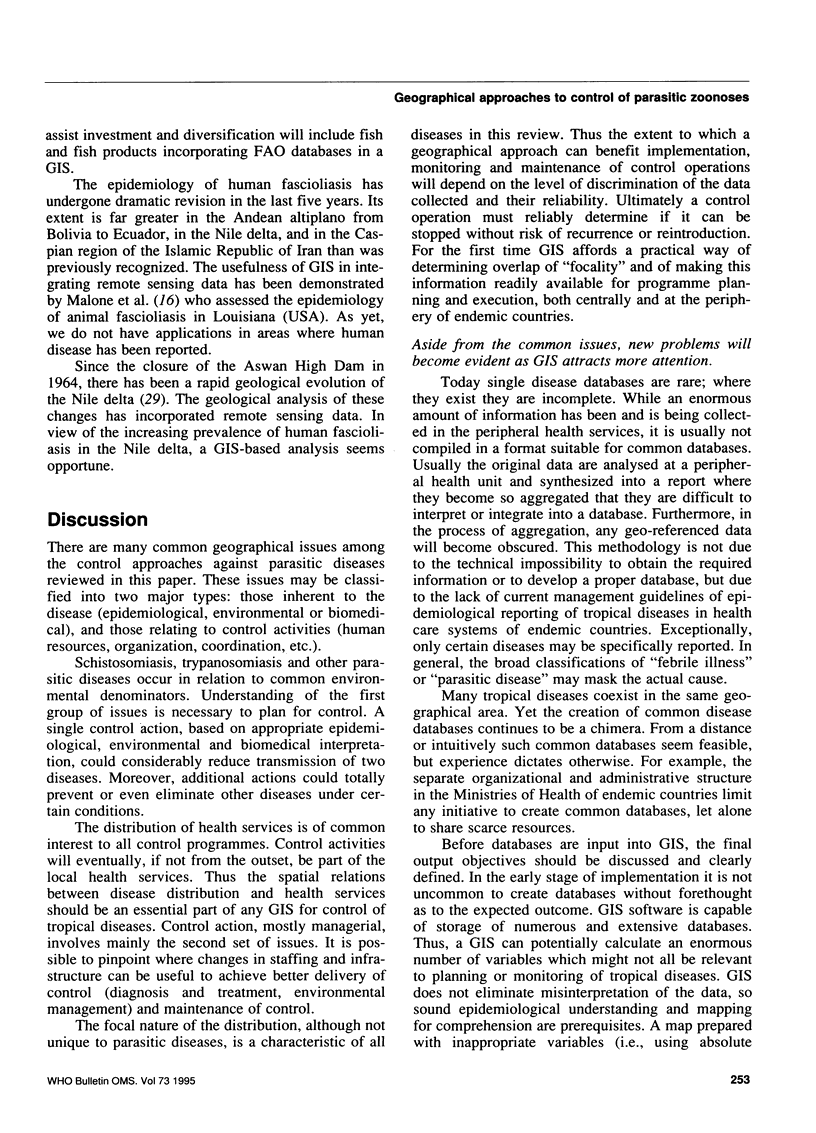
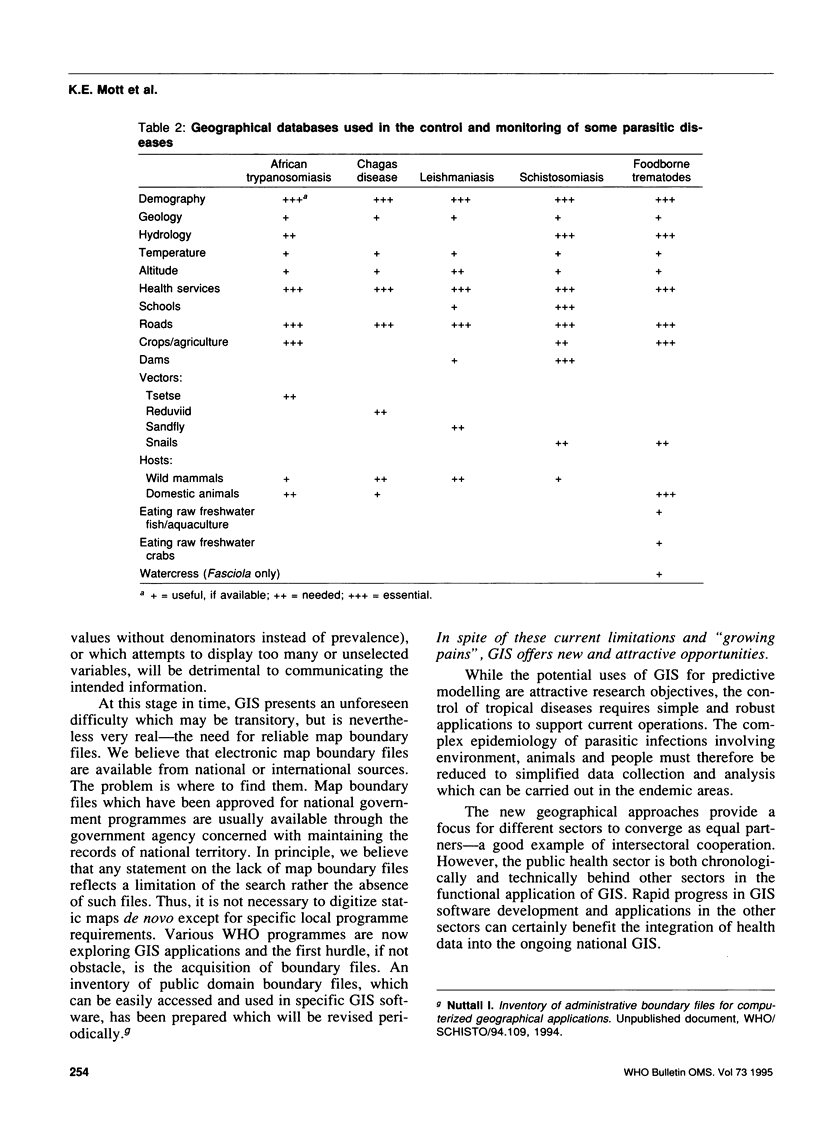
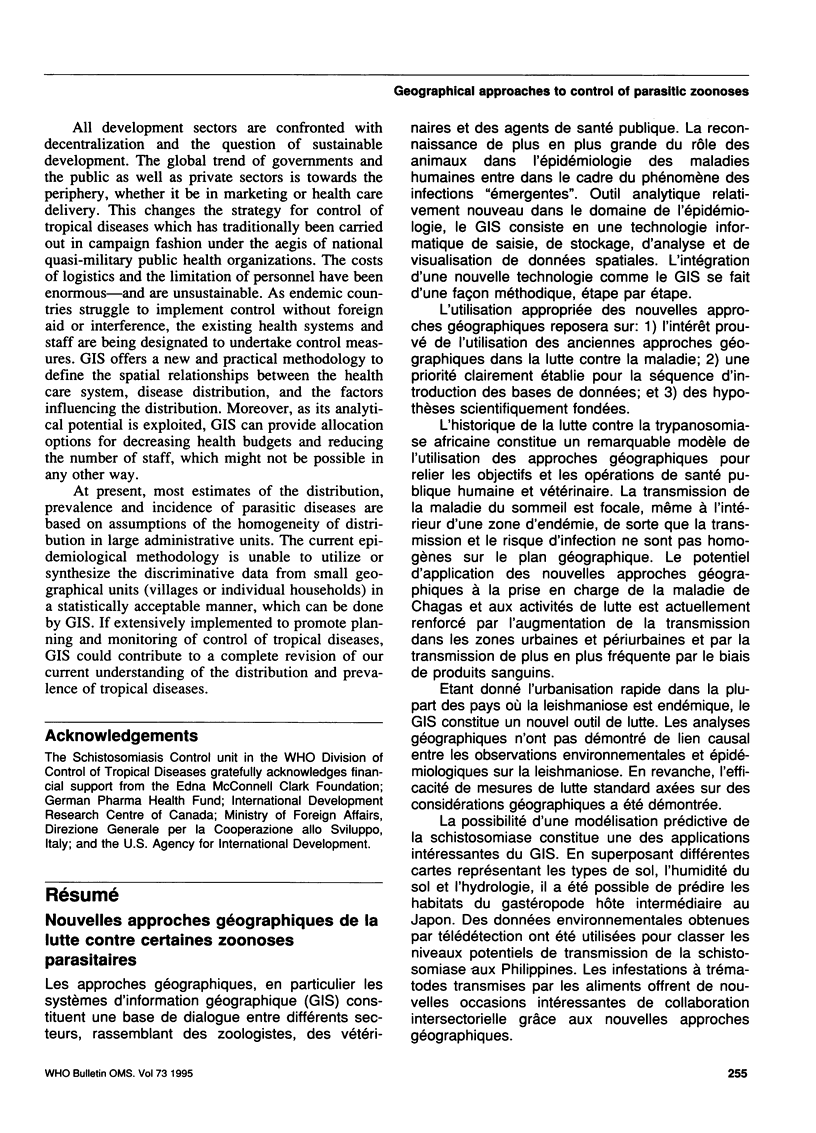
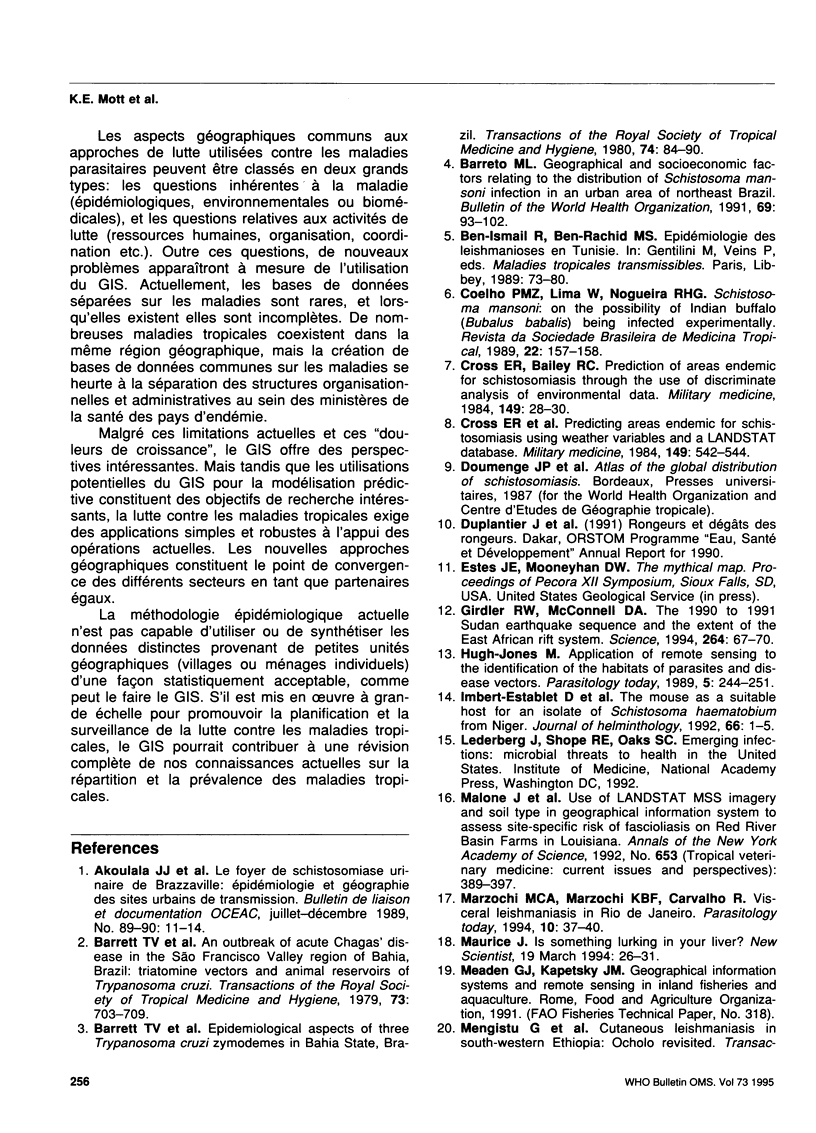
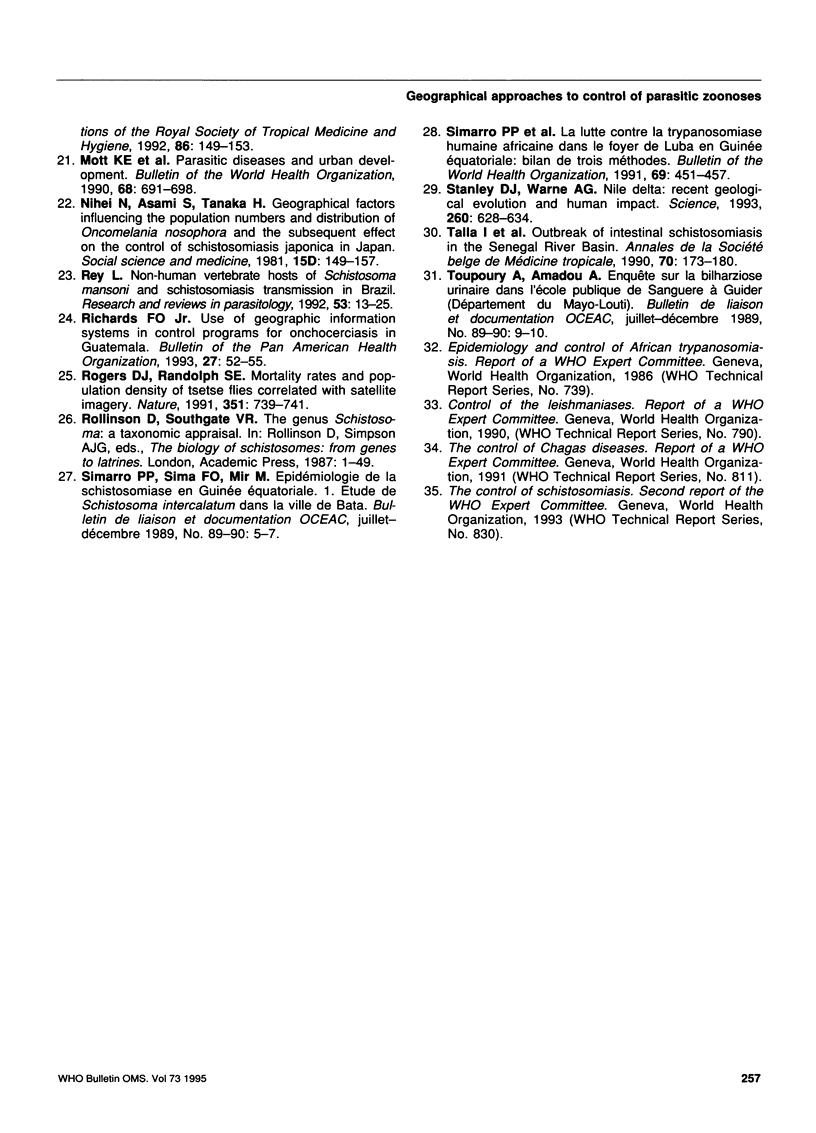
Selected References
These references are in PubMed. This may not be the complete list of references from this article.
- Barreto M. L. Geographical and socioeconomic factors relating to the distribution of Schistosoma mansoni infection in an urban area of north-east Brazil. Bull World Health Organ. 1991;69(1):93–102. [PMC free article] [PubMed] [Google Scholar]
- Barrett T. V., Hoff R., Mott K. E., Guedes F., Sherlock I. A. An outbreak of acute Chagas's disease in the São Francisco Valley region of Bahia, Brazil: triatomine vectors and animal reservoirs of Trypanosoma cruzi. Trans R Soc Trop Med Hyg. 1979;73(6):703–709. doi: 10.1016/0035-9203(79)90025-7. [DOI] [PubMed] [Google Scholar]
- Coelho P. M., Lima W. S., Nogueira R. H. Schistosoma mansoni: on the possibility of Indian buffalo (Bubalus bubalis) being experimentally infected. Rev Soc Bras Med Trop. 1989 Jul-Sep;22(3):157–158. doi: 10.1590/s0037-86821989000300008. [DOI] [PubMed] [Google Scholar]
- Cross E. R., Bailey R. C. Prediction of areas endemic for schistosomiasis through use of discriminant analysis of environmental data. Mil Med. 1984 Jan;149(1):28–30. [PubMed] [Google Scholar]
- Cross E. R., Sheffield C., Perrine R., Pazzaglia G. Predicting areas endemic for schistosomiasis using weather variables and a Landsat data base. Mil Med. 1984 Oct;149(10):542–544. [PubMed] [Google Scholar]
- Girdler R. W., McConnell D. A. The 1990 to 1991 Sudan earthquake sequence and the extent of the East african rift system. Science. 1994 Apr 1;264(5155):67–70. doi: 10.1126/science.264.5155.67. [DOI] [PubMed] [Google Scholar]
- Hugh-Jones M. Applications of remote sensing to the identification of the habitats of parasites and disease vectors. Parasitol Today. 1989 Aug;5(8):244–251. doi: 10.1016/0169-4758(89)90256-1. [DOI] [PubMed] [Google Scholar]
- Malone J. B., Fehler D. P., Loyacano A. F., Zukowski S. H. Use of LANDSAT MSS imagery and soil type in a geographic information system to assess site-specific risk of fascioliasis on Red River Basin farms in Louisiana. Ann N Y Acad Sci. 1992 Jun 16;653:389–397. doi: 10.1111/j.1749-6632.1992.tb19667.x. [DOI] [PubMed] [Google Scholar]
- Marzochi M. C., Marzochi K. B., Carvalho R. W. Visceral leishmaniasis in Rio de Janeiro. Parasitol Today. 1994 Jan;10(1):37–40. doi: 10.1016/0169-4758(94)90358-1. [DOI] [PubMed] [Google Scholar]
- Mott K. E., Desjeux P., Moncayo A., Ranque P., de Raadt P. Parasitic diseases and urban development. Bull World Health Organ. 1990;68(6):691–698. [PMC free article] [PubMed] [Google Scholar]
- Nihei N., Asami S., Tanaka H. Geographical factors influencing the population numbers and distribution of Oncomelania nosophora and the subsequent effect on the control of schistosomiasis japonica in Japan. Soc Sci Med Med Geogr. 1981 Feb;15D(1):149–157. doi: 10.1016/0160-8002(81)90025-3. [DOI] [PubMed] [Google Scholar]
- Richards F. O., Jr Use of geographic information systems in control programs for onchocerciasis in Guatemala. Bull Pan Am Health Organ. 1993;27(1):52–55. [PubMed] [Google Scholar]
- Rogers D. J., Randolph S. E. Mortality rates and population density of tsetse flies correlated with satellite imagery. Nature. 1991 Jun 27;351(6329):739–741. doi: 10.1038/351739a0. [DOI] [PubMed] [Google Scholar]
- Simarro P. P., Sima F. O., Mir M., Mateo M. J., Roche J. La lutte contre la trypanosomiase humaine africaine dans le foyer de Luba en Guinée équatoriale: bilan de trois méthodes. Bull World Health Organ. 1991;69(4):451–457. [PMC free article] [PubMed] [Google Scholar]
- Stanley D. J., Warne A. G. Nile delta: recent geological evolution and human impact. Science. 1993 Apr 30;260(5108):628–634. doi: 10.1126/science.260.5108.628. [DOI] [PubMed] [Google Scholar]
- Talla I., Kongs A., Verlé P., Belot J., Sarr S., Coll A. M. Outbreak of intestinal schistosomiasis in the Senegal River Basin. Ann Soc Belg Med Trop. 1990 Sep;70(3):173–180. [PubMed] [Google Scholar]


